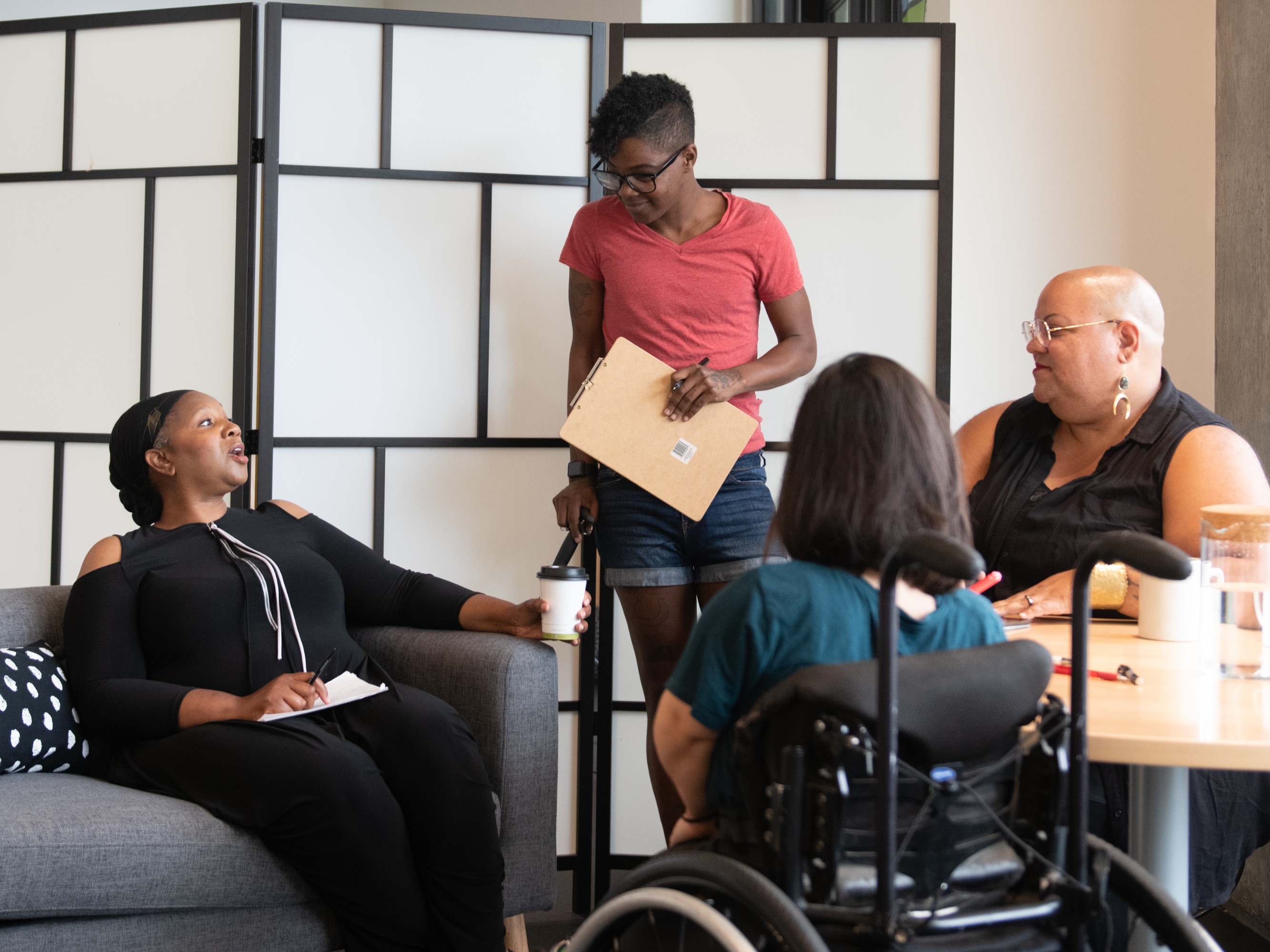Introduction to AODA
The Accessibility for Ontarians with Disabilities Act (AODA) is a law in Ontario, Canada that aims to improve accessibility and remove barriers for people with disabilities. This law applies to all organizations in the province, including post-secondary institutions.
Check out eCampus Ontario's new AODA resources!
Post-secondary institutions have a responsibility to make sure their programs, services, and facilities are accessible to people with disabilities. This includes making physical spaces like classrooms, residence buildings, and restrooms accessible, as well as providing accessible communication, information, and technology. To meet these requirements, post-secondary institutions may need to make changes like installing ramps and elevators, providing large print materials, and offering sign language interpretation. Institutions must also create a plan to make their websites and web-based applications accessible. In addition to these specific responsibilities, post-secondary institutions must also develop policies, practices, and procedures that promote accessibility and identify, remove, and prevent barriers for people with disabilities. This could include training staff on disability awareness and how to accommodate students with disabilities, as well as regularly reviewing and updating policies and procedures to meet the needs of people with disabilities.
It is important for post-secondary institutions to take their obligations under the AODA seriously, as failure to comply can result in fines and legal action. However, more importantly, meeting the requirements of the AODA helps create a more inclusive and accessible environment for all students, staff, and visitors. By taking steps to remove barriers and ensure equal access to programs, services, and facilities, post-secondary institutions can create a more supportive community for everyone.

AODA for Faculty
Faculty working in post-secondary institutions in Ontario have several responsibilities under AODA. These responsibilities may vary depending on the specific role and responsibilities of the faculty member, but may include:
- Providing accessible course materials and other resources to students with disabilities, such as large print materials, audio recordings, or electronic versions of texts.
- Making reasonable accommodations for students with disabilities in the classroom, such as providing alternative formats for assignments, extra time for tests and exams, or allowing students to use assistive technology.
- Ensuring that any presentations, lectures, or other teaching materials are delivered in a way that is accessible to students with disabilities. This may include using visual aids, providing written materials, or using clear and concise language.
- Referring students with disabilities who need help accessing support services or accommodations to accessibility services on campus.
- Participating in any relevant training or professional development opportunities on disability awareness and accommodations.
- Being aware of and following the policies and procedures of the post-secondary institution related to accessibility and accommodations for students with disabilities.
It is important for faculty to be proactive in ensuring that their teaching practices and materials are accessible to all students, including those with disabilities.
There are several ways that faculty can make their learning materials accessible to meet the requirements of AODA. Some strategies that faculty can use include:
- Using clear and concise language: Use simple, straightforward language and avoid jargon or technical terms that may be difficult for some students to understand.
- Providing text alternatives: Consider providing text alternatives for any visual materials, such as images, graphs, or charts. This could include providing a written description or a separate text-based version of the material.
- Using headings and lists: Use headings and lists to help break up text and make it easier to scan and understand.
- Using alternative formats: Consider providing materials in various formats, such as large print, electronic documents, or audio recordings. This can help students who have difficulty reading print materials or who prefer to access information in a different format.
- Using captions and transcripts: If you use videos, podcasts, or other audio materials in your course, make sure to provide captions and transcripts to make them accessible to students who are deaf or hard of hearing.
It is also important for faculty to be open to implementing accommodation plans for students with disabilities, such as providing materials in a different format or allowing students to use assistive technology in the classroom. By being proactive and flexible in making their materials accessible, faculty can help to create an inclusive and welcoming learning environment for all students.
AODA for Staff
Non-teaching staff also have responsibilities under AODA. These responsibilities may vary depending on the specific role and responsibilities of the staff member, but may include:
- Providing accessible customer service: Staff should be trained in how to interact with and serve people with disabilities and should be familiar with the policies and procedures of the post-secondary institution related to accessibility and accommodations.
- Maintaining accessible facilities: Staff may be responsible for maintaining and ensuring the accessibility of facilities, such as classrooms, restrooms, and public areas. This may include ensuring that ramps and elevators are in good working order and that doorways and other spaces are wide enough to accommodate people with mobility impairments.
- Providing accessible communication: Staff should be prepared to communicate with people with disabilities in an accessible way. This may include using clear and concise language, providing written materials or visual aids, or using assistive devices such as real-time captioning or providing sign language interpretation.
- Participating in training: Staff should participate in any relevant training or professional development opportunities on disability awareness and accommodations.
It is important for all staff to be aware of and follow the policies and procedures of the post-secondary institution related to accessibility and accommodations, and to ensure that they are providing accessible services to all students, staff, and visitors.
AODA at St. Clair College
St. Clair College is committed to adhering to identifying, preventing, and removing barriers to accessibility as outlined within AODA (Accessibility for Ontarians with Disabilities Act). The AODA sets out specific accessibility standards in five primary areas:
- Customer Service
- Information and Communications
- Employment
- Transportation
- Built Environment
This guide provides instructions and support for faculty in the area of Information and Communications. Part of our responsibility as faculty is to provide learning materials such as images, documents, and videos in ways that support a student's ability to access the learning material regardless of disability. This can include, but is not limited to, students who:
- are blind or have low vision
- are deaf or have impaired hearing
- are neurodivergent
- have a learning disability (such as Dyslexia, Dysgraphia, Dyscalculia, Auditory processing, Language processing, Nonverbal learning, Visual perceptual/visual motor)
- cannot hold publications or turn pages because of a physical disability

Photo by Sigmund on Unsplash
Students may use assistive technology to support their learning such as text-to-speech, speech-to-text, screen readers, and document conversion (print to electronic text, braille, or large text). We can support our students by taking care when creating our learning materials to ensure our materials can be easily used with assistive technology and can be converted into usable formats. Attention paid to how we create our learning materials helps all students as it provides greater flexibility and choice in how all students can interact with our materials. The government of Ontario provides additional information about how educational institutions can fulfill their obligations. This documentation lists types of accessible formats that individuals with disabilities use.
Types of Accessible Formats:
- HTML and Microsoft Word
- Braille
- accessible audio formats
- large print
- text transcripts of visual and audio information, such a video transcript
The following video provides an explanation of educators' responsibilities under AODA and gives some examples of how instruction can be created to improve accessibility for all.
You may also like to explore Microsoft products that can be used by individuals with a variety of disabilities as assistive technology.